
Constantin Brâncuși was a Romanian sculptor, painter and photographer who made his career in France. Considered one of the most influential sculptors of the 20th century and a pioneer of modernism, Brâncuși is called the patriarch of modern sculpture. As a child, he displayed an aptitude for carving wooden farm tools. Formal studies took him first to Bucharest, then to Munich, then to the École des Beaux-Arts in Paris from 1905 to 1907. His art emphasizes clean geometrical lines that balance forms inherent in his materials with the symbolic allusions of representational art. Brâncuși sought inspiration in non-European cultures as a source of primitive exoticism, as did Paul Gauguin, Pablo Picasso, André Derain, and others. However, other influences emerge from Romanian folk art traceable through Byzantine and Dionysian traditions.
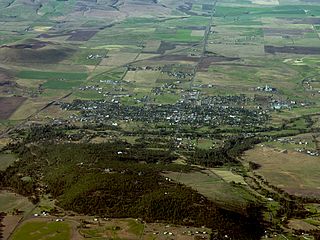
Goldendale is a city and county seat of Klickitat County, Washington, United States, near the Columbia River Gorge. The population within city limits was 3,760 at the 2000 census and 3,407 at the 2010 census, a 9.4% decrease. It is situated in a primarily agricultural area and is also near Goldendale Observatory State Park. The valley in which Goldendale is located offers views of the Cascade Mountains to the west and the Simcoe Mountains to the north.

Maryhill is an unincorporated community and census-designated place (CDP) in Klickitat County, Washington, United States. The population was 58 at the 2010 census, down from 98 at the 2000 census.

The Legion of Honor, formally known as the California Palace of the Legion of Honor, is an art museum in San Francisco, California. Located in Lincoln Park, the Legion of Honor is a component of the Fine Arts Museums of San Francisco, which also administers the de Young Museum.

Samuel Hill, was an American businessman, lawyer, railroad executive, and advocate of good roads. He substantially influenced the Pacific Northwest region's economic development in the early 20th century.
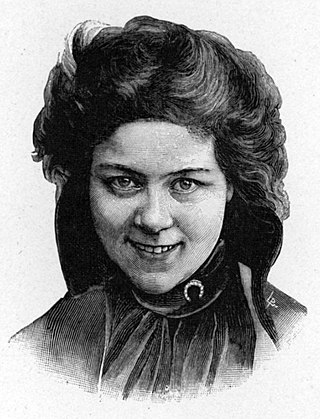
Loie Fuller, also known as Louie Fuller and Loïe Fuller, was an American dancer and a pioneer of modern dance and theatrical lighting techniques.

William McGregor Paxton was an American painter and instructor who embraced the Boston School paradigm and was a co-founder of The Guild of Boston Artists. He taught briefly while a student at Cowles Art School, where he met his wife Elizabeth Okie Paxton, and at the Museum of Fine Arts School in Boston. Paxton is known for his portraits, including those of two presidents—Grover Cleveland and Calvin Coolidge—and interior scenes with women, including his wife. His works are in many museums in the United States.

The Calouste Gulbenkian Museum houses one of the world's most important private art collections. It includes works from Ancient Egypt to the early 20th century, spanning the arts of the Islamic World, China and Japan, as well as the French decorative arts, the jewellery of René Lalique and some of the most important painters of all times works such as Rembrandt, Monet, Rubens, Manet, Renoir, Degas and Turner.
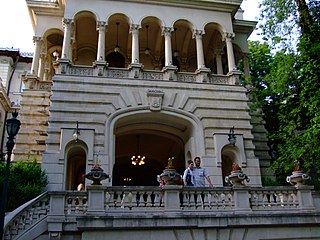
Cotroceni Palace is the official residence of the President of Romania. It is located at Bulevardul Geniului, nr. 1, in Bucharest, Romania. The palace also houses the National Cotroceni Museum.

The San Francisco Maritime National Historical Park is located in San Francisco, California, United States. The park includes a fleet of historic vessels, a visitor center, a maritime museum, and a library/research facility. Formerly referred to as the San Francisco Maritime Museum, the collections were acquired by the National Park Service in 1978. The San Francisco Maritime National Historical Park was authorized in 1988; the maritime museum is among the park's many cultural resources. The park also incorporates the Aquatic Park Historic District, bounded by Van Ness Avenue, Polk Street, and Hyde Street.
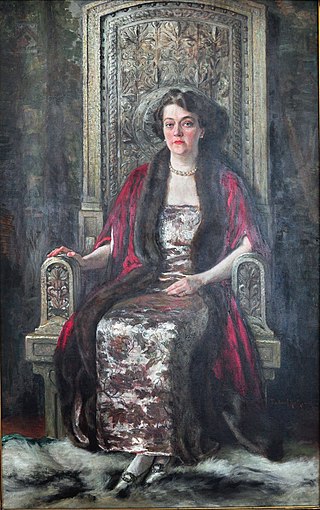
Alma de Bretteville Spreckels was a wealthy socialite and philanthropist in San Francisco, California. She was known both as "Big Alma" and "The Great Grandmother of San Francisco". Among her many accomplishments, she persuaded her first husband, sugar magnate Adolph B. Spreckels, to donate the California Palace of the Legion of Honor to the city of San Francisco.

U.S. Route 97 in the U.S. state of Washington is a 322-mile (518 km) route which traverses from the Oregon state line at the northern end of the Sam Hill Memorial Bridge in Maryhill, north to the Canada–US border in Okanogan County near Oroville. The highway serves major cities such as Goldendale, Yakima, Ellensburg and Wenatchee before continuing towards the Alaska Highway at the Yukon border as British Columbia Highway 97. Along the length of the roadway, US 97 is concurrent with State Route 14 in Maryhill, Interstate 82 (I-82) and US 12 between Union Gap and Ellensburg, I-90 briefly in Ellensburg, US 2 between Peshastin and rural Douglas County and SR 20 near Omak. An alternate route connects the highway with Chelan.

Dan Owen Dailey is an American artist and educator, known for his sculpture. With the support of a team of artists and crafts people, he creates sculptures and functional objects in glass and metal. He has taught at many glass programs and is professor emeritus at the Massachusetts College of Art, where he founded the glass program.

The Boston School was a group of Boston-based painters active in the first three decades of the twentieth century. Often classified as American Impressionists, they had their own regional style, combining the painterliness of Impressionism with a more conservative approach to figure painting and a marked respect for the traditions of Western art history. Their preferred subject matter was genteel: portraits, picturesque landscapes, and young women posing in well-appointed interiors. Major influences included John Singer Sargent, Claude Monet, and Jan Vermeer. Key figures in the Boston School were Edmund C. Tarbell, Frank Weston Benson, and William McGregor Paxton, all of whom trained in Paris at the Académie Julian and later taught at the School of the Museum of Fine Arts. Their influence can still be seen in the work of some contemporary Boston-area artists.

Isabelle Jeanne Marie Alice Jacobs, by marriage, Countess Isabelle de Borchgrave d'Altena is a prominent Belgian artist and sculptor, best known for her colorful paintings, intricately painted paper sculptures, paper garments and wearable art. She is married to Count Werner de Borchgrave d'Altena.
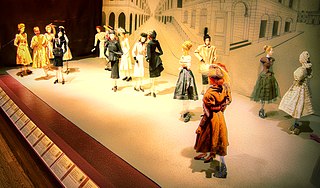
Théâtre de la Mode was a 1945–1946 touring exhibit of fashion mannequins created at approximately 1/3 the size of human scale, and crafted by top Paris fashion designers.It was created to raise funds for war survivors and to help revive the French fashion industry in the aftermath of World War II. While raising funds, Théâtre de la Mode was also meant to showcase the work of Parisian couturiers. The original Théâtre de la Mode exhibit toured Europe and then the United States, and is now part of the permanent collections of the Maryhill Museum of Art in Washington state in the United States. In addition to its fundraising and industry revival goals, the Théâtre de la Mode exhibit played a significant role in promoting French fashion internationally. The miniature mannequins and exquisite designs showcased the creativity and craftsmanship of Parisian couturiers, attracting attention and admiration from fashion enthusiasts worldwide. The exhibit's subsequent journey to the United States helped solidify the global influence of French fashion and contributed to the post-war cultural exchange between Europe and America.

Elizabeth Okie Paxton (1878–1972) was an American painter, married to another artist William McGregor Paxton (1869–1941). The Paxtons were part of the Boston School, a prominent group of artists known for works of beautiful interiors, landscapes, and portraits of their wealthy patrons. Her paintings were widely exhibited and sold well.
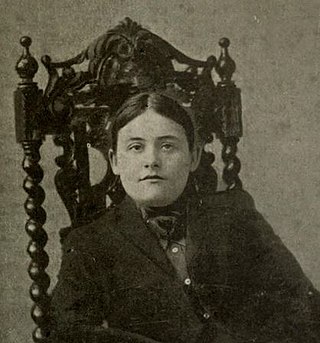
Gabrielle Bloch, known professionally as Gab Sorère, was a French art promoter, set designer, mechanical innovator, filmmaker and choreographer of the Belle Époque. Collaborating with her partner, Loïe Fuller, to explore illusion through luminescence, she produced films and choreographies which moved performance from dancers being lighted to the abstract vision of lights dancing. When Fuller died, Sorère inherited the dance troupe and laboratory of her partner and strove to keep her legacy as a visual effects artist alive. She continued to produce innovative productions utilizing fluorescence and light into the 1950s.

May Slessinger was an American artist specializing in miniatures, based in San Francisco, California.























